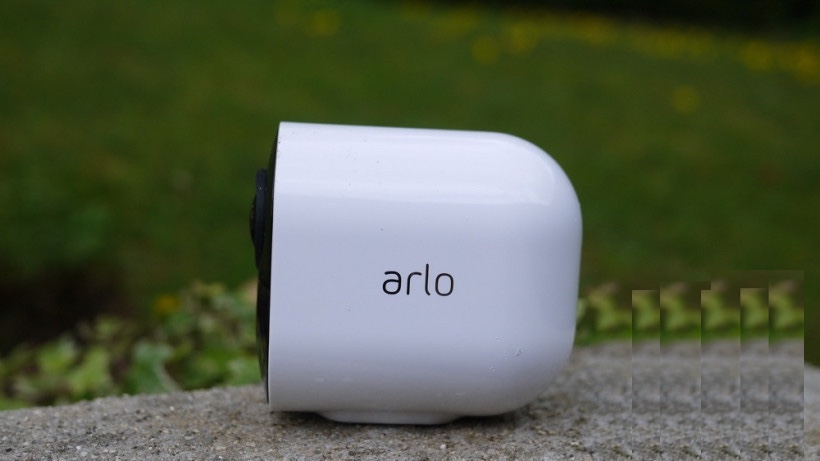We review Arlo's brand new 4K camera
With the breadth of features, versatility of use, wire-free setup and top battery life, the Arlo Ultra is a camera we'd strongly recommend. However, the cost is increasing exponentially, and it’s now eye-wateringly expensive to build a system – especially if you want to get the best features. If you can afford the outlay, however, you’re getting a camera system you can rely on.
Pros
- Brilliant footage at 4K
- HDR makes 1080p superior
- Great battery life
Cons
- Plans getting expensive
- High entry cost
- New base station required
Arlo’s 4K home security camera – the Arlo Ultra – is finally on sale, and for anyone looking for the best coverage and features for their smart home, it should be high on the list.
Ultra HD streaming and recording is clearly the headline feature – as well as 100% wire-free operation and weatherproofing – but that’s not the limit of the Arlo Ultra.
It’s had a number of design upgrades over the Arlo Pro 2 and welcomes a raft of new smart features from automatic detection of animals, people and packages to an integrated spotlight.
See also: Arlo Pro 3 review
But it doesn’t come cheap. A single Arlo Ultra camera and the new base station that’s required for handling 4K will start at £449.99, more than a Nest Cam IQ – which isn’t a good look.
And then there’s the extra costs. You get a year of Arlo Smart Premier with the camera, which is £6.49 per month.
Updates imminent: Arlo Ultra 2 and Arlo Pro 4 Wire-Free Spotlight Cameras go live
You don’t have to have that – but you will to get 4K video, as well as a Premium Video Subscription on top, which is another £1.49 per camera, per month. That means it’s roughly £108 per year on top of your £449.
Is it worth it? Let’s find out.
Arlo Ultra: Design
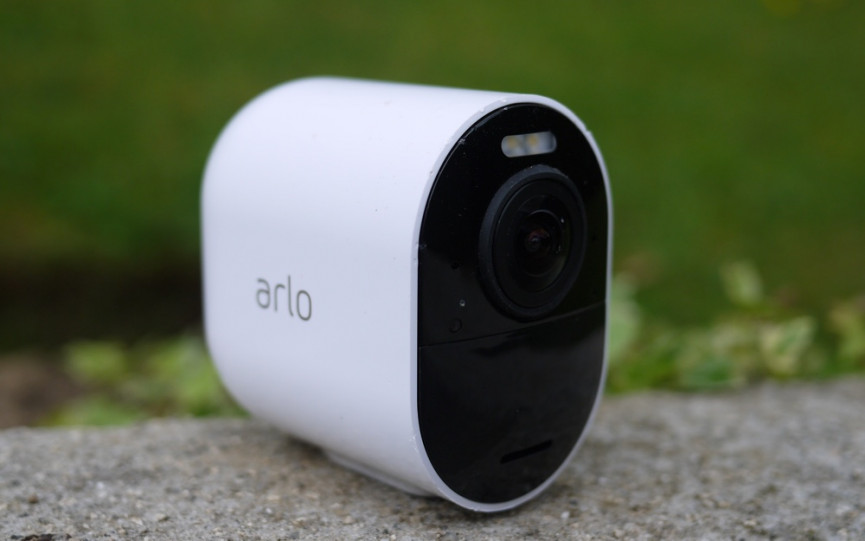
The Arlo Ultra has an integrated spotlight
The design of the Arlo Ultra looks pretty much identical to its predecessor – it’s still 100% wire free thanks to the built-in lithium-ion battery, and weatherproofed for outdoor use.
First, the noticeable: there’s now an integrated spotlight built into the Arlo Ultra camera, which will illuminate the viewing area when motion is detected.
Ding dong: Arlo Video Doorbell review
This means there’s less reliance on night vision, and there’s the added benefit of it doubling as a security light on your property. It’s nowhere near as bright as the dedicated Arlo Smart Security Light, but it will cover a range of around 20 feet.
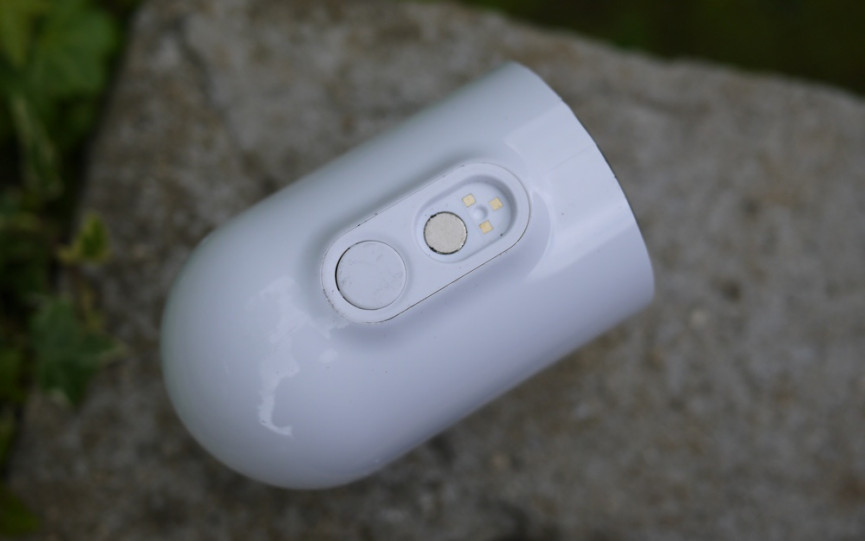
The design of the unit itself hasn’t really changed, but the charger is now a magnetic proprietary cable, rather than the micro USB port, which was pretty flimsy. You can also buy an elongated housing to fit a bigger battery, which extends battery life to a couple of months between charges.
Like the Arlo Pro 2, the new Arlo Ultra can be mounted magnetically (via a supplied accessory), so it’s easy to pop on and off to detach. If you want to place the Arlo somewhere less easy to reach then you can use the supplied power cable so no recharging is required.
Also, again, like most Arlo cameras, the Ultra still requires a hub – something you won’t find on most rival cameras. However, while this is a nuisance and drives up cost, it means the range of the cameras is so much better than others we’ve tried.
Budget rival: Reolink RLC-810A 4K review
The Arlo Ultra will work way out in the garden, even if the hub and router is on the other side of the house – while rivals have stuttered even if directly connected to the house walls.
Arlo Ultra cameras will work with older hubs, but you won’t get 4K, which rather defeats the point. However, you can connect older cameras to the new hub, so nothing goes to waste. For many, adding an Arlo Ultra will be the main camera in the set up, and older Arlo Pro 2 cameras can be added in for less important areas.
Arlo Ultra: Features
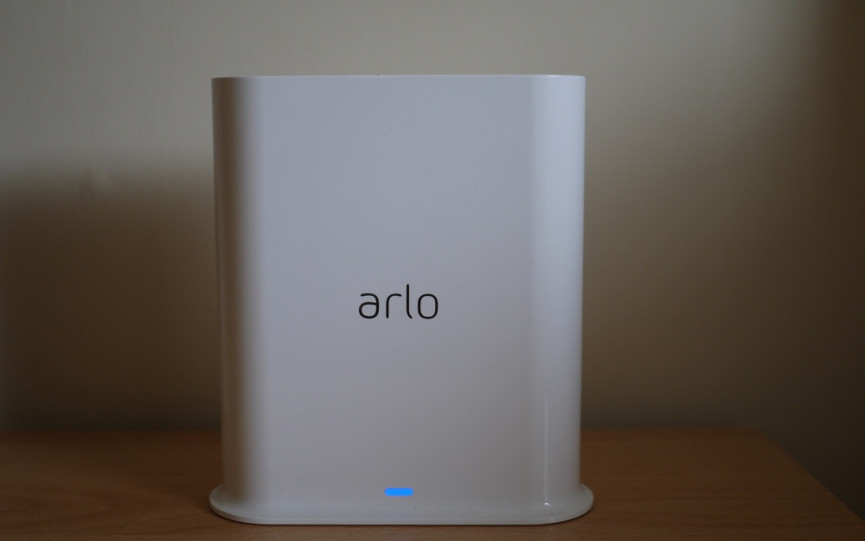
In terms of features, the Arlo Ultra is probably the best smart video camera out there – eclipsing even Nest and its mighty Cam IQ Indoor and Outdoor. It will record, capturing video after movement triggers of anything in its view.
Aside from the 4K sensor – which can be found on the Nest Cam IQ Indoor/Outdoor – there’s also a whopping 180-degree field of view (which can be reduced to 160 or 120 degrees within the app) and a de-warping feature to flatten the image, so things don’t appear as if viewed from a goldfish bowl. This works really well, offering wide perspectives without making items appear tiny in the frame, and while we toyed with narrower fields of view, we returned our Arlo Ultra to 180 degrees.
There’s noise cancellation now, which adds some superior wind-cutting, not something we really noticed as a benefit over the Arlo Pro 2 when working as a security camera. However, if you do use the two-way audio feature you’ll find this useful, and there’s a louder speaker integrated, too. We found two-way audio a lot easier to use, although still a tiny bit laggy.
Cheaper option: Arlo Essential XL Spotlight review
The Arlo Ultra will automatically zoom and track once it spies motion, although we found this to be pretty jumpy – and we’d rather just zoom in manually on objects. It might be useful if you spy a person somewhere they shouldn’t be, but it didn’t work for our wildlife visitors.
Finally, the Arlo Ultra has a siren, so if you spy someone on the camera you can scare them off. It’s pretty loud, although hardly replaces a real security system.
Then a bunch of features have been carried over from the Pro 2. You can still have captured video be saved to external storage, and download captured footage to smartphones, and Mac/PC via the web portal (although the latter can’t deal with 4K).
Arlo Ultra: Arlo Smart subscriptions
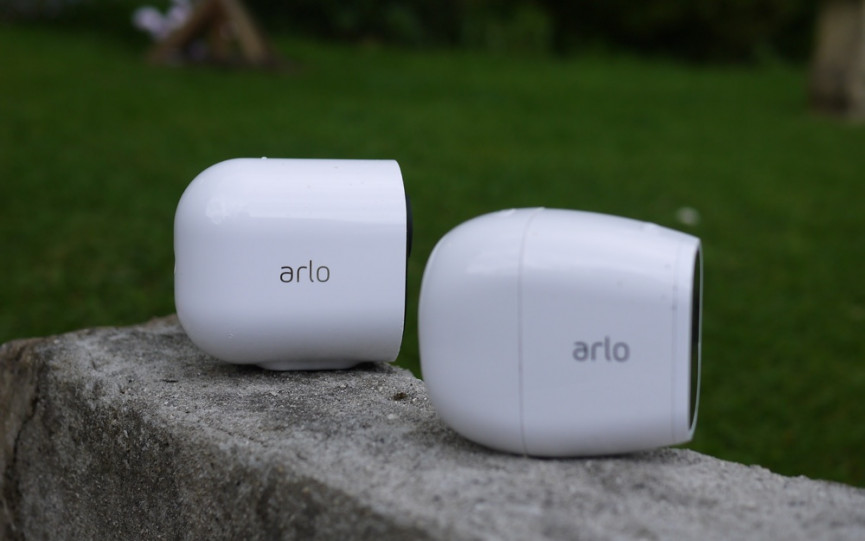
Arlo Ultra (rear) and Arlo Pro 2 (front)
The release of the Arlo Ultra coincides with a major overhaul of the company’s smart features. You still get seven days storage and playback of captured video free of charge, although most of the exciting features are now behind a subscription.
The levels are now Arlo Smart Basic (free) which offers free seven day storage, Premier ($119.98 per year) which offers 30 days storage and playback, and Elite ($227.55 per year), which offers 60 days. You get a year of free Arlo Smart Premier with the Arlo Ultra.
Smart Premier and Elite offer extra features. The main one is smart notifications, which enable cameras to alert for people, animals, packages and cars. Arlo will categorise these in the captured library, and you can filter by camera and the type of notification.
You can filter for specific notification types – you might want to look at people or lurkers, or in our case, we’re more interested in videos of animals visiting the garden.
We found the Arlo smart notifications to be a really useful way of managing the sheer number of positives the cameras pick up. There still isn’t the facial recognition used by Nest and Netatmo, but this goes some way to bringing order to the chaos of 100+ triggers per day.
But the price of ongoing subscriptions is one of the biggest headaches for those choosing a smart security camera. And where Arlo used to be incredible value, it’s fast becoming one of the most expensive choices.
The Arlo Smart Basic, which is free, still gives more than most competitors. However, the Smart Premier subscription at £7.49 per month ($£89.98 for a year) offers less features at the same price as Nest – which we’ve criticised for being too expensive.
Nest Aware starts at $5 per month for five days of history, which includes 24/7 continual capture, which is available as an add-on for Arlo which is extra $112 per month. A 30-day Nest plan is $30 a month, however, so Arlo offers better storage time, although a higher barrier to those smart features.
To get the same total mix of features you’d need the Smart Premier subscription (£89.98), 24/7 CVR ($£83.88) and Premium Video 4K (£17.88).
So, you could be looking at an annual bill of $275 for services, on top of a camera that’s already cost you £449. That’s a bit ridiculous.
Arlo Ultra: Camera performance
So, how does the new Arlo Ultra perform? Well, even without 4K, the HDR sensor makes for much improved footage over the standard Arlo Pro 2. Side-by-side, the difference is hugely noticeable, with sharper visuals and more accurate colors at 1080p.
But when you upgrade to 4K, things get even better, as you might imagine. Footage is crisp, bright and colorful and you can zoom into items and retain much better clarity than before.
Triggers were reliable – although it could benefit from a slightly longer pre-roll, as we often found animals or people leaving the action area, rather than arriving – perhaps indicating a slight lag.
You can watch the 4K footage back in the app, and download them in 4K, too. And you can download to your Mac from the web portal, as well. There’s some sample footage below, so you can see for yourself.
In terms of night performance, the integrated spotlight means you’re more likely to capture events after dark. And night vision has been upgraded too to color, so you don’t have to put up with black and white for after dark images. However, pictures are noisier and lack the pin-sharp detail of night vision – but you have the option.
Arlo Ultra: Battery life
Battery life has always impressed with the Arlo Pro 2, which offers around a month between charges with around 100 triggers per day. We’d call that a medium amount of activity, much less than on the front of a house on a busy street, for example.
The Arlo Ultra does drain slightly faster, but will still offer three weeks in the same location between charges. Of course, you can plug into the mains – which will then let you take advantage of action areas.


